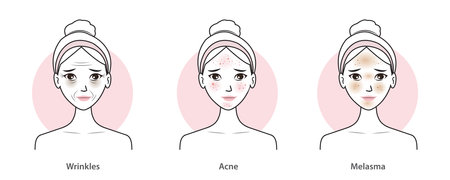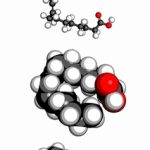Introduction to Hair Restoration Methods
Hair loss is a common concern affecting millions of people, and many seek effective solutions to restore their hair. There are several hair restoration methods available, each with its own benefits and limitations. Whether youre considering hair growth supplements, medications, surgical procedures, or lifestyle changes, understanding the differences can help you make an informed decision.
Hair Growth Supplements
Hair growth supplements contain vitamins, minerals, and other nutrients designed to support healthy hair growth from within. These supplements typically include ingredients like biotin, collagen, and saw palmetto, which may help strengthen hair follicles and reduce hair thinning.
Medications
There are FDA-approved medications such as minoxidil (Rogaine) and finasteride (Propecia) that are commonly used to treat hair loss. Minoxidil is a topical treatment that stimulates hair follicles, while finasteride is an oral medication that blocks hormones responsible for hair thinning.
Surgical Procedures
For those looking for permanent results, surgical options like hair transplants can be effective. Procedures such as follicular unit transplantation (FUT) and follicular unit extraction (FUE) involve transplanting healthy hair follicles to balding areas to promote natural hair regrowth.
Lifestyle Changes
Certain lifestyle adjustments can also play a role in maintaining healthy hair. Eating a balanced diet rich in essential nutrients, reducing stress levels, and avoiding excessive heat or chemical treatments can all contribute to better hair health.
Comparison of Hair Restoration Methods
| Method | Effectiveness | Time to See Results | Main Benefits | Main Drawbacks |
|---|---|---|---|---|
| Hair Growth Supplements | Mild to Moderate | A few months | Nourishes hair from within; easy to use | Takes time; may not work for severe hair loss |
| Medications (Minoxidil/Finasteride) | Moderate to High | A few months | Clinically proven; non-invasive | Potential side effects; requires continuous use |
| Surgical Procedures (Hair Transplant) | High | A few months to a year | Permanent results; natural appearance | Expensive; requires surgery and recovery time |
| Lifestyle Changes | Mild to Moderate | A few months or longer | No side effects; improves overall health | Takes time; may not fully reverse hair loss |
2. How Hair Growth Supplements Work
Hair growth supplements are designed to provide essential nutrients that support hair health from the inside out. Unlike topical treatments or surgical procedures, these supplements work by nourishing the hair follicles through vitamins, minerals, and other natural ingredients. But how exactly do they compare to other hair restoration methods? Lets break it down.
Key Ingredients in Hair Growth Supplements
Most hair growth supplements contain a combination of vitamins, minerals, and plant-based compounds known to promote stronger, healthier hair. Here are some of the most common ingredients:
| Ingredient | How It Supports Hair Growth |
|---|---|
| Biotin (Vitamin B7) | Strengthens hair strands and reduces breakage. |
| Collagen | Provides amino acids that support hair structure and elasticity. |
| Zinc | Aids in tissue repair and helps maintain healthy scalp conditions. |
| Saw Palmetto | May help block DHT, a hormone linked to hair loss. |
| Iron | Supports red blood cell production, which delivers oxygen to hair follicles. |
| Vitamin D | Poor levels of Vitamin D have been linked to hair thinning. |
| Ashwagandha | An adaptogen that may help reduce stress-related hair loss. |
The Effectiveness of Hair Growth Supplements vs. Other Methods
The effectiveness of hair growth supplements varies from person to person, depending on factors like diet, genetics, and underlying health conditions. While they can be beneficial for overall hair health, how do they compare with other popular restoration methods?
| Treatment Method | Main Benefit | Main Drawback |
|---|---|---|
| Hair Growth Supplements | Nourishes hair from within; supports long-term health. | Takes time to show results; less effective for advanced hair loss. |
| Topical Treatments (e.g., Minoxidil) | Stimulates follicles directly for visible regrowth. | Might cause scalp irritation; requires continuous use. |
| Surgical Procedures (e.g., Hair Transplants) | Permanently restores lost hair in balding areas. | Carries risks like infection; expensive procedure. |
| Lifestyle Changes (e.g., Diet & Stress Management) | Naturally improves overall hair health without side effects. | Takes significant time and consistency to see results. |
Are Hair Growth Supplements Right for You?
If youre experiencing mild to moderate hair thinning or want to improve your overall hair quality, supplements can be a great addition to your routine. However, those with severe hair loss might need a more intensive approach, such as prescription treatments or professional procedures. Combining supplements with a balanced diet and proper scalp care can enhance their effectiveness over time.

3. Comparing Supplements to Medications and Topical Treatments
When it comes to hair restoration, there are several options available, including hair growth supplements, FDA-approved medications like finasteride, and topical treatments such as minoxidil. Each method works differently and has its own set of benefits and drawbacks. Understanding these differences can help you choose the best approach for your hair health.
Effectiveness
Hair growth supplements typically contain vitamins, minerals, and natural ingredients that support overall hair health. While they can help strengthen hair and reduce shedding, they may not be as effective for significant hair regrowth, especially in cases of androgenetic alopecia (pattern baldness).
On the other hand, FDA-approved treatments like minoxidil and finasteride have been clinically proven to promote hair regrowth. Minoxidil is a topical treatment that stimulates hair follicles, while finasteride is an oral medication that blocks DHT, a hormone linked to hair loss.
Side Effects
One of the advantages of hair growth supplements is that they usually have minimal side effects since they contain natural ingredients. However, some people may experience mild digestive issues or allergic reactions.
In contrast, minoxidil and finasteride can come with more noticeable side effects. Minoxidil users may experience scalp irritation or increased shedding during the initial phase. Finasteride, though effective, has been linked to potential sexual side effects in some men.
Ease of Use
The convenience of each method also plays a role in decision-making. Hair supplements are easy to incorporate into daily routines—simply taking a pill or gummy once a day is all it takes.
Minoxidil requires consistent application to the scalp twice a day for optimal results, which can be time-consuming. Finasteride is taken orally once a day but requires a prescription from a doctor.
Comparison Table
| Treatment Type | Effectiveness | Side Effects | Ease of Use |
|---|---|---|---|
| Hair Growth Supplements | Mild to moderate; supports overall hair health but may not regrow lost hair | Minimal; possible digestive issues or allergies | Easy; taken orally once daily |
| Minoxidil (Topical) | Clinically proven for regrowth; must be used consistently | Mild irritation, initial shedding phase | Moderate; applied twice daily |
| Finasteride (Oral) | Highly effective for male pattern baldness | Potential sexual side effects in some men | Easier than minoxidil but requires a prescription |
4. Hair Transplants vs. Natural Supplementation
When it comes to restoring hair, two common approaches are hair transplants and natural supplementation. Both have their pros and cons, and the right choice depends on factors like budget, invasiveness, and long-term effectiveness. Lets break down the key differences.
Cost Comparison
One of the biggest differences between hair transplants and supplements is the cost. Hair transplants can be a significant financial investment, while supplements tend to be more affordable.
| Method | Average Cost | Ongoing Expenses |
|---|---|---|
| Hair Transplant | $4,000 – $15,000 (one-time) | Minimal (occasional touch-ups) |
| Hair Growth Supplements | $20 – $80 per month | Continuous expense |
Invasiveness and Recovery Time
Hair transplants are a surgical procedure that involves taking hair follicles from one part of the scalp and implanting them in thinning areas. This process requires local anesthesia and comes with a recovery period.
- Hair Transplants: Invasive procedure, requires healing time (typically 1-2 weeks).
- Supplements: Non-invasive, taken orally with no downtime.
Long-Term Effectiveness
The long-term success of each method depends on individual factors like genetics, lifestyle, and consistency in treatment.
- Hair Transplants: Provides permanent results for many people but doesnt prevent future hair loss in untreated areas.
- Supplements: Supports overall hair health but requires continuous use to maintain benefits.
Which Option Is Right for You?
If youre looking for an immediate and more permanent solution, a hair transplant may be worth considering despite the cost and recovery time. On the other hand, if you prefer a non-invasive approach that promotes overall hair health, supplements might be a better option—especially if youre in the early stages of hair thinning.
Ultimately, the best choice depends on your personal goals, budget, and willingness to commit to long-term maintenance.
5. Which Hair Restoration Method is Right for You?
Choosing the best hair restoration method depends on several factors, including your budget, the severity of your hair loss, and your personal preferences. Some people prefer a non-invasive approach, while others may be open to medical procedures for more dramatic results. Below, we compare different methods to help you decide which one suits you best.
Comparing Hair Growth Supplements to Other Methods
Each hair restoration method has its own advantages and limitations. Here’s a comparison to help you evaluate your options:
| Method | Effectiveness | Cost | Invasiveness | Main Considerations |
|---|---|---|---|---|
| Hair Growth Supplements | Mild to moderate improvement over time | $20 – $80 per month | Non-invasive | Takes time; results vary by individual |
| Topical Treatments (e.g., Minoxidil) | Moderate effectiveness with consistent use | $30 – $60 per month | Non-invasive | Might cause scalp irritation; requires continuous use |
| Prescription Medications (e.g., Finasteride) | High effectiveness for male pattern baldness | $50 – $100 per month | Slightly invasive (systemic effects) | Potential side effects; prescription required |
| PRP Therapy (Platelet-Rich Plasma) | Potential for noticeable regrowth in some cases | $500 – $1,500 per session | Minimally invasive (injections) | Treatment needed every few months for maintenance |
| Hair Transplant Surgery | Permanent and highly effective for advanced hair loss | $4,000 – $15,000 (one-time cost) | Surgical procedure (invasive) | Carries risks like scarring; requires recovery time |
Selecting the Best Option Based on Your Needs
The right choice depends on what youre looking for in a hair restoration method. Here’s how to decide:
If You Prefer a Natural Approach:
If you want a non-medical solution with minimal risk, hair growth supplements and topical treatments like Minoxidil are good starting points. These options are affordable and easy to incorporate into your routine.
If You Need Faster or Stronger Results:
If your hair loss is more advanced or you want noticeable regrowth sooner, a combination of prescription medications and PRP therapy may work better. However, these options come with higher costs and potential side effects.
If You Want a Permanent Solution:
If youre dealing with significant hair loss and are willing to undergo a procedure, a hair transplant surgery might be the best option. Though expensive, it provides lasting results.
The Bottom Line: Finding What Works for You
Your decision should be based on your personal goals, comfort level, and budget. Some people see great results with supplements and topical treatments alone, while others opt for medical procedures for more dramatic improvements. Consulting with a dermatologist or hair specialist can also help you determine the most effective approach for your specific situation.


